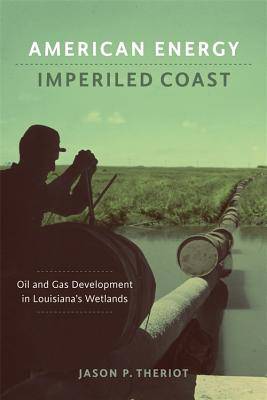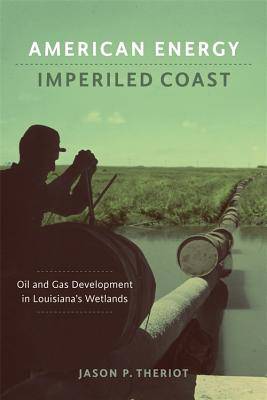
- Retrait gratuit dans votre magasin Club
- 7.000.000 titres dans notre catalogue
- Payer en toute sécurité
- Toujours un magasin près de chez vous
- Retrait gratuit dans votre magasin Club
- 7.000.000 titres dans notre catalogue
- Payer en toute sécurité
- Toujours un magasin près de chez vous
Description
In the post--World War II era, Louisiana's coastal wetlands underwent an industrial transformation that placed the region at the center of America's energy-producing corridor. By the twenty-first century the Louisiana Gulf Coast supplied nearly one-third of America's oil and gas, accounted for half of the country's refining capacity, and contributed billions of dollars to the U.S. economy. Today, thousands of miles of pipelines and related infrastructure link the state's coast to oil and gas consumers nationwide. During the course of this historic development, however, the dredging of pipeline canals accelerated coastal erosion. Currently, 80 percent of the United States' wetland loss occurs on Louisiana's coast despite the fact that the state is home to only 40 percent of the nation's wetland acreage, making evident the enormous unin-tended environmental cost associated with producing energy from the Gulf Coast.
In American Energy, Imperiled Coast Jason P. Theriot explores the tension between oil and gas development and the land-loss crisis in Louisiana. His book offers an engaging analysis of both the impressive, albeit ecologically destructive, engineering feats that characterized industrial growth in the region and the mounting environmental problems that threaten south Louisiana's communities, culture, and "working" coast. As a historian and coastal Louisiana native, Theriot explains how pipeline technology enabled the expansion of oil and gas delivery -- examining previously unseen photographs and company records -- and traces the industry's far-reaching environmental footprint in the wetlands. Through detailed research presented in a lively and accessible narrative, Theriot pieces together decades of political, economic, social, and cultural undertakings that clashed in the 1980s and 1990s, when local citizens, scientists, politicians, environmental groups, and oil and gas interests began fighting over the causes and consequences of coastal land loss. The mission to restore coastal Louisiana ultimately collided with the perceived economic necessity of expanding offshore oil and gas development at the turn of the twenty-first century. Theriot's book bridges the gap between these competing objectives.
From the discovery of oil and gas below the marshes around coastal salt domes in the 1920s and 1930s to the emergence of environmental sciences and policy reforms in the 1970s to the vast repercussions of the BP/Deepwater Horizon oil spill in 2010, American Energy, Imperiled Coast ultimately reveals that the natural and man-made forces responsible for rapid environmental change in Louisiana's wetlands over the past century can only be harnessed through collaboration between public and private entities.
Spécifications
Parties prenantes
- Auteur(s) :
- Editeur:
Contenu
- Nombre de pages :
- 328
- Langue:
- Anglais
- Collection :
- Tome:
- n° 2
Caractéristiques
- EAN:
- 9780807155172
- Date de parution :
- 14-04-14
- Format:
- Livre relié
- Format numérique:
- Genaaid
- Dimensions :
- 162 mm x 235 mm
- Poids :
- 580 g







